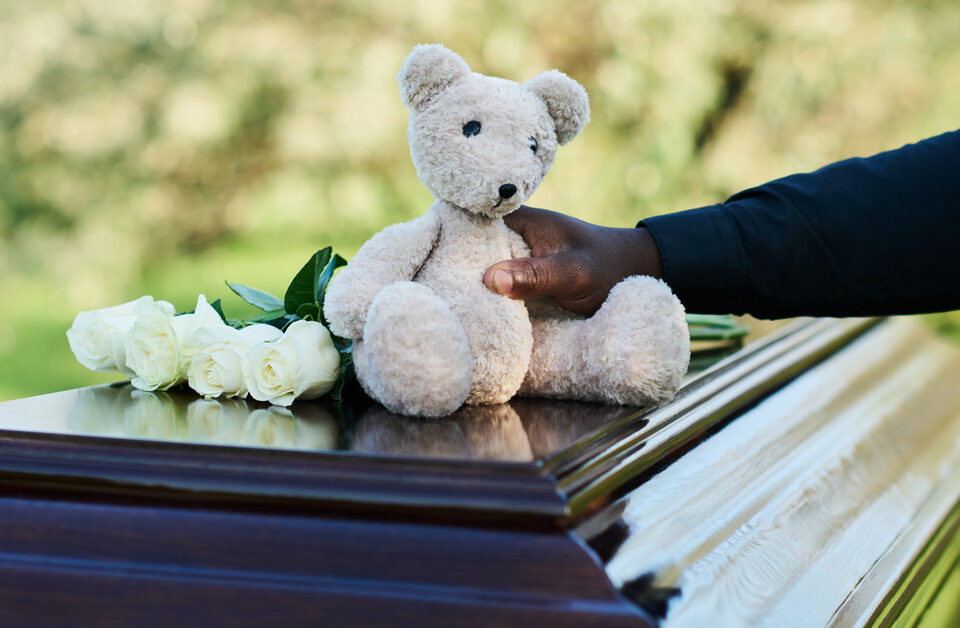Planning a Memorial Ceremony at Home: A Step-by-Step Guide

Incorporating Family Heritage into Funeral Services
October 4, 2024
Supporting Mental Health After Losing a Loved One
October 4, 2024Recent years have also witnessed a rising tendency to hold a memorial ceremony at home. This is because it is easier to do this than sit in an auditorium for many families which allow them to pay tribute to a deceased loved one in a more intimate way. Conducting a memorial service at home is also less restrictive and more comforting allowing for personalization to the memorial depending on the character of the deceased.
This article outlines how to prepare for, arrange and conduct a burial ceremony at home, and contains useful information on several issues including planning, logistics, and funeral personalization. Whether it is about celebrating life, or getting immersed in the grieving process, this will assist in constructing and conducting a well-deserved and peaceful service.
Deciding on the Type of Ceremony
Choosing Between a Traditional or Non-Traditional Ceremony
In home memorial service planning, the first question arises on whether to choose a traditional or a non-traditional ceremony. In most cases, traditional ceremonies tend to stick to some scripted rituals which could entail prayers, reading a speech, and observing a dignified behavior. Usually, these types of ceremonies aim at paying condolence and are appropriate for individuals who wish to follow to a certain way of presenting their grief.
On the other hand, non-traditional ceremonies can be more flexible and celebratory in nature. They often incorporate joyful memories, stories, or even upbeat music to celebrate the life of the deceased. Should your loved one have a special hobby, favorite music, or even a way of life which was unique to him/her, this kind of service can take those features in.
The main focus is to honor the desires of the deceased and cultivate a space which caters to the emotional wellbeing of the mourners, creating a blend of sorrow and joy.
Celebrating Life vs. Mourning Loss
When assessing the ambiance of a home-based memorial service, one of the primary considerations is whether the family chooses to celebrate the life or mourn the death of the individual. There are families that prefer to celebrate the individual’s life without dwelling too much on the grief, and hence the ceremony is less dark. Such ceremony, in most instances, concentrates on narrations and displays of photographs, inviting participants to engage and contribute to the joyous ambience created around the purpose of the occasion.
Alternatively, for those who are experiencing intense grief, focusing on mourning loss may provide a space to process emotions and begin the healing journey. In such cases, incorporating moments of silence, grief counseling resources, and reflecting on the person’s departure can offer support.
Combining elements of both approaches can be beneficial, as it allows guests to both celebrate the person’s life while also providing moments for reflection, allowing everyone to express their grief and emotions in a healthy way.
Planning the Home Memorial Service Planning
Preparing Your Home for the Ceremony
Practically and emotionally, you should prepare your home to host a memorial service. To begin with, the place must be accessible, comfortable, and large enough to accommodate everyone. Inside, it is possible to create a calming atmosphere with flowers, candles, or other beautiful pieces that echo the interests of the deceased.
For those opting for an outdoor ceremony, ensure that the weather is suitable or that you have tents or covered areas to accommodate changing weather conditions. Gardens and backyards can offer a peaceful, natural backdrop, which may enhance the emotional atmosphere of the service.
Indoor vs. Outdoor Options
Taking into account your preferences regarding home memorials, look at the available options and make up your mind whether you will place an indoor memorial or outdoors. Indoor settings provide an element of privacy and control, whereas outdoor ceremonies include elements of nature, which can be very integral and soothing to the guests present.
In an indoor environment, there is plenty of scope for personal decorations like, for example; slideshows, photo displays or even calm music. An outdoor arrangement may extend the service to nature especially if the departed loved one enjoyed the outdoors a lot. Whichever option you go for, ensure that it remains consistent with the overall theme of the service, whether happy or dull.
Ensuring Accessibility for Guests
When hosting a memorial at home, ensuring that the space is accessible for all attendees is essential. Consider the needs of elderly or disabled guests. If your home has stairs, provide ramps or ensure that seating is comfortable and accessible. This not only makes the ceremony more inclusive but also shows thoughtful consideration of everyone’s needs during this emotionally sensitive time.
Furthermore, you might consider providing online attendance alternatives, like a live streaming option, for those guests who cannot come in person. This will be appropriate especially to family members or friends who are a bit far away and would love to see the ceremony.
Organizing the Ceremony’s Program
Creating a Memorial Program
A well-organized memorial program helps guide the flow of the ceremony and ensures that everything runs smoothly. Begin with an opening speech, welcoming guests and setting the tone of the event. Follow this with key segments, including readings, eulogies, and music. Make sure to allocate time for personal tributes from close family members and friends.
Prayers or moments of reflection may also be incorporated especially where families have religious practices. There is always the need to remember and celebrate life in the course of the program. This approach ensures that one heals emotionally and at the same time respects the passed one.

Choosing Readings, Speeches, and Music for Home Memorial Service Planning
Selecting meaningful readings, speeches, and music is essential to creating a personalized memorial. Choose readings that reflect both the personality of your loved one and offer emotional support for those grieving. Whether you select religious texts, poems, or passages from favorite books, these readings can offer solace and guidance during the service.
For speeches, choose individuals who can share personal stories and insights into the life of the deceased. Their words can help bring a sense of closure and shared memory to the event. Music plays a powerful role in setting the emotional tone—whether you select traditional hymns, soothing classical music, or songs that were personally meaningful to the deceased.
Incorporating Personal Touches
Personalizing the service and home memorial service planning with personal touches can make the memorial more meaningful. Consider displaying memory boards filled with photos, artwork, or letters from loved ones. You could also set up a memory table, where guests can leave notes, mementos, or flowers as part of their farewell.
An alternate concept would be to make a visually appealing slideshow or video tribute that emphasizes the key moments in the life of your loved one. These aspects contribute towards the individuality, interests and achievements of the person and allows the crowd to remember and celebrate the lived years.
Inviting Guests and Managing Logistics
Sending Invitations and Announcements
After finalizing the program and the venue, the next step is to reach out to guests. At this point, one has the option of using either the traditional paper invitations or sending e-invitations through sites such as Evite, Facebook or even through email. Make sure that the invitations leave no window for questions by stating the time, date, venue and any special instructions such as dress code and whether guests should bring flowers, among others.
For smaller gatherings, you may wish to call close family and friends personally. This not only invites them to the event but also offers them emotional support as they begin their grieving journey.
Coordinating Guest Participation
Depending on the preferences of those attending, you may wish to coordinate guest participation by inviting specific individuals to contribute. This could involve asking them to give a speech, read a poem, or share a story. For those unable to attend in person, consider live streaming the service via Zoom or another platform, allowing them to participate virtually.
To help manage logistics, assign someone to handle RSVPs, coordinate parking, and manage any other practical concerns, ensuring the day runs smoothly.
DIY Memorial Decorations
Ideas for Creating a Personalized Memorial Atmosphere
A prominent benefit of holding a memorial service at home is the freedom to use homemade memorial decorations. This can be done by making fresh flower arrangements using the favorite flowers of the deceased, making arrangements for photos, or even placing candles in their honor. Memory boards showcasing pictures from different stages of their life can add a personal and comforting touch.
You may also want to consider creating keepsakes for guests, such as small photo cards, memory jars, or tokens that remind them of the loved one. These decorations and keepsakes help build an atmosphere of reflection, love, and remembrance.


